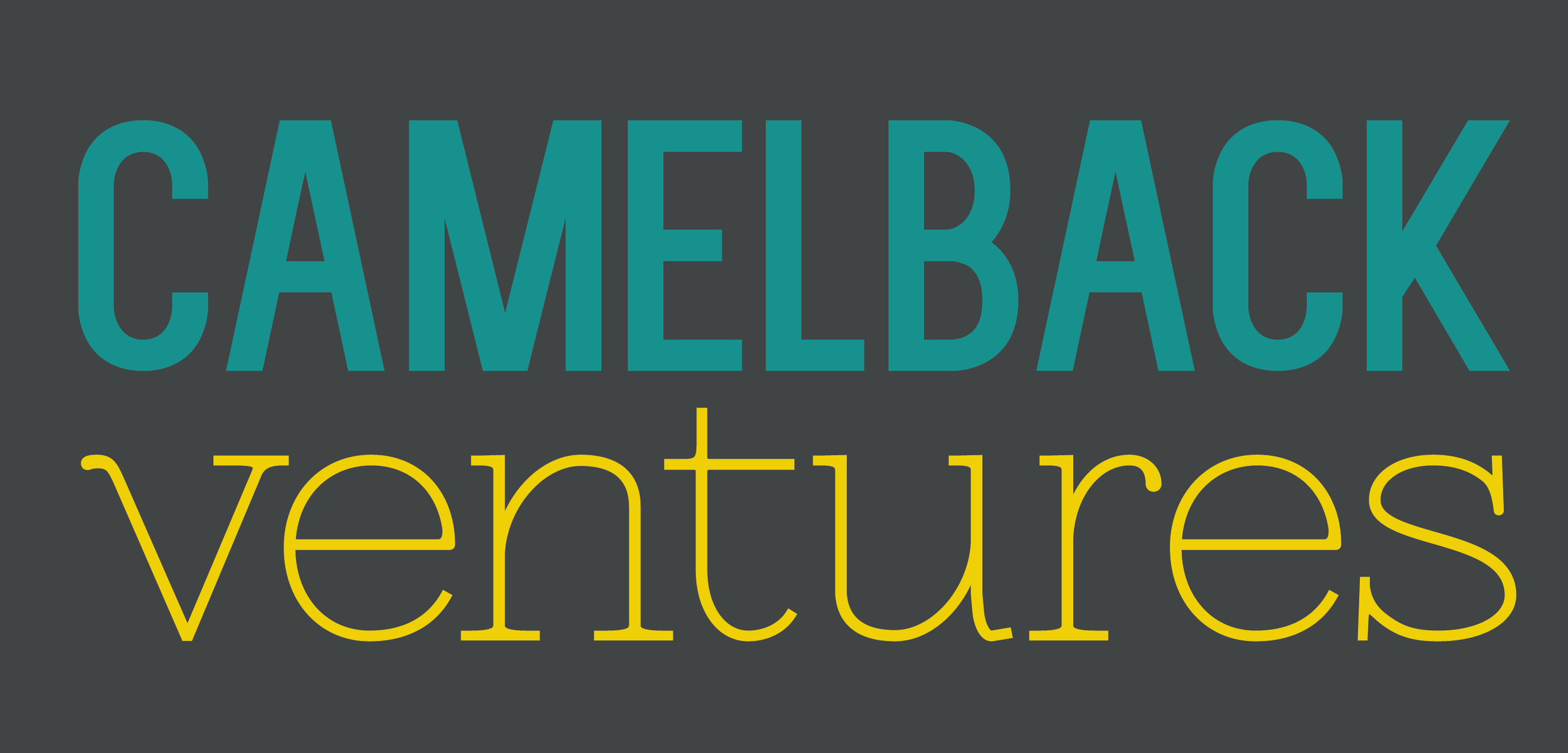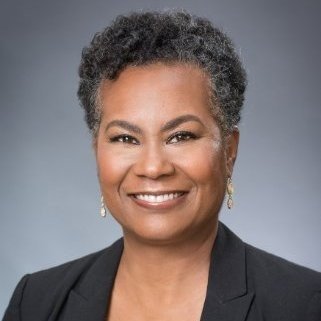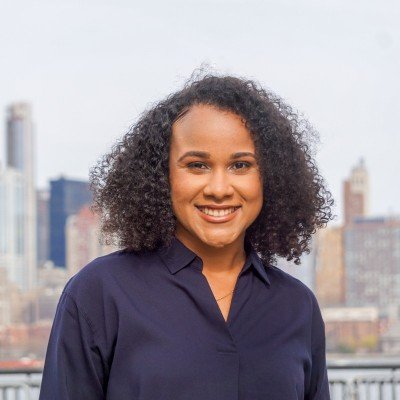Truth Tellers and Dreamers for a Just Funding World
By: Krystal Kincaid, Senior Associate of the Capital Collaborative by Camelback Ventures
We know what we need to do differently. There’s a roadmap. There are tons of blog posts, case studies, and literature on how foundations need to tweak what they are doing to do “good” philanthropy. We know how philanthropy needs to change and yet, the many voices of nonprofit leaders and advocates throughout the sector are certain - we have a long way to go.
If we’re dreaming big enough, a system like philanthropy as it exists in the United States today should not exist, let alone the racial dynamics that exist that mean BIPOC leaders receive less of the funding pie.
Funders who choose to dream big know that the examples for “good” philanthropy are the starting points of changing the landscape. We need those funders who are willing to go beyond those starting points to reimagine the system of funding–building power to cede power. We are lucky to have some of these dreamers on our “It’s Not Your Money” series, which features frank conversations challenging the status quo of funding.
Learn alongside us from our latest “It’s Not Your Money” guests’ provocative wisdom below, where we’ve also included some prepared questions for you to use in your next team meeting, over the lunch table, or at a staff retreat to spark discussion and challenge your thinking. You can also click through to hear the full interviews:
Language as an embrace, not a barrier. The language funders use can create barriers and distance with leaders and communities of color. Many organizations use language that implies that leaders of color are "needy" or "lacking" resources. This language can be harmful because it reinforces negative stereotypes about people of color.
What language does your organization use that might create barriers and distance with leaders and communities of color? What language do/could you use that illuminates the power leaders and communities already have?
Real talk about being an anti-racist organization. ‘What we’re actually signing up for is being uncomfortable, that’s what being on a diverse team means if people are really going to bring the difficulty of their experiences and their perspectives to the table–it’s discomfort.’
Have you ever been part of a real, unfiltered, truth-telling dialogue with a nonprofit leader? What type of organization within your network might be most trusted by nonprofits and foundations to create a safe and supported space for this sort of dialogue?
How ESOs support equitable capacity building. ‘I’m trying to penetrate those seemingly impenetrable walls of private networks and ‘no unsolicited proposals’ and stuff that philanthropy is so wonderfully good at erecting and protecting.’
Is there a way fundraisers can get in touch with you if they don’t have a connection to your organization? Does your organization’s capacity-building work center racial equity and racial justice? If not, how might you take a small step to move towards this?
Founder & CEO,
Camelback Ventures
Dr. Laura Gerald, Kate B. Reynolds Foundation, on truth telling for foundations:
Know your history–all of it. ‘What trust can there be without truth?... We felt it was important to tell the whole truth and tell what we didn’t know.’
Can your organization tell the FULL, complicated history of how it came to be? How might you own the mix of both the positive and negative truth of the wealth accumulated to form your organization?
Examine your language. ‘Nobody intended to demean or to cause harm but until consciousness and intentionality is really used as a lens through everything that we’re doing, and particularly the words that we’re saying, we don’t realize how much our words can cause harm.’
What language does your organization use that might be pejorative towards the communities you serve or center power asymmetry? What language might center appreciation for those communities?
Face what is really broken. ‘The people are not broken–the systems are. And if we don’t tell the truth about how these systems got to where they are then we will embark upon the wrong problem solving approaches.’
Does your organization focus on broken people and behaviors or broken systems? What local or regional history would someone need to know to truly understand the systems at play?
Understand the disparities undervalued entrepreneurs face. ‘Instead of saying diverse founder let’s say Black, let’s say Latinx, let’s say Latina, let’s say Chicana, Chicanx. I’d rather folx get that wrong and we have a conversation about race and identity than being called a diverse founder because what I hear is other, I hear alien, I hear I’m not getting real money–I’m getting petty coin money, I’m getting alright money, and not the revolutionary, transformational money I really do need to make change.’
How might your organization be undervaluing or underfunding entrepreneurs? Does your organization have a separate fund or grant size for ‘diverse’ founders? If not, what’s your average grant size for cis white male vs Black or Brown female or queer founders?
Entrepreneurship is with and for community. ‘Entrepreneurship is a form of activism, entrepreneurship is personal to me.’
Do those you fund build products or services for their own communities or other people’s communities? Do you look for leaders who see themselves as activists too? How might your funding process look different if you were specifically focused on funding those building with and for their own communities?
Create space for people to show up as themselves. ‘A lot of the entrepreneurship journey, communities of color are put on to compete for a small bucket of money and it… becomes, who’s a model minority, who’s going to show up and be that token example for everyone… only those, it seems sometimes, that assimilated to white dominant culture are the ones that get access.’
What are ways philanthropy encourages and rewards founders who assimilate to white dominant culture? What things could your org do differently to create spaces and processes that make it safe for founders to show up as themselves?
Product Manager,
Visible Hands
Know our field’s history. ‘When the institution of the foundation was created it was modeled after a bank, so you had officers and you had owners of a bank–a family or an individual or shareholders. You have a Board of Trustees. The entire construct very much resembles a for profit bank… We really need a complete shift.’
Why do we call ourselves officers? Officers of what? What are we policing?
Address the difference between ownership and stewardship. ‘Stewardship is really about the careful and thoughtful and responsible management and oversight of something that’s entrusted to your care. Stewardship means there’s added concern and understanding–for the organization that you’re caring for but also for the resources that you have on behalf of others.’
Does your organization explicitly talk about how the money and foundation does not belong to trustees? Does your organization talk about the difference between ownership and stewardship? How do your practices and language both reinforce and undermine the difference?
We need accountability. ‘The biggest problem is there’s no accountability and until you figure that out or you insist on it yourself and you find a way to do it authentically… it makes it easy to be complicit and to replicate the behaviors and norms of dominant culture.’
What types of accountability does your organization experience? How does that compare to the types of accountability nonprofits and grantseekers experience? How would you design an accountability system for philanthropy?
What might your organization know but not do? ‘At this point we have so many great frameworks authored by movement partners and frontline community members, it’s time for us to actually activate what’s been written about.’
If you’re really honest with yourselves, what does your organization say but not do? Where is there room for you to move from words to actions?
Move past extractive approaches. ‘It doesn’t really matter where you are on the spectrum of extractive to regenerative, as long as the goal is to move towards regenerative.’
How would your organization define ‘extractive’ practices? Would any of your organization’s current practices or historical origins fall under that definition?
Contribute to a Just Transition. ‘We’ve seen this removal of wealth from communities through the depletion, through the degradation of, for example, natural resources or the exploitation of human labor, even the accumulation of wealth by interests outside of the community… let’s dismantle that and let’s move towards a practice that is based on reciprocal relationships of interdependence, between not only human communities but also the living world.’
What are three ways you could support a frontline community-led organization, business, or activity, that are within your own role’s responsibilities and decision-making purview?
Thank you to the dreamers and the doers who are pushing this sector forward each day, not to small reform but to a new and just world. To listen to future conversations, follow Camelback Ventures on LinkedIn.
This thought leadership piece and others like it can be found in Camelback Ventures' Giving Compass ‘Racial Equity in Philanthropy' e-magazine collection. Check it out!
_________
The Capital Collaborative by Camelback Ventures works with white funders and social impact investors who want to deepen their individual and organizational commitment to racial and gender equity in philanthropy — but may not know how. You can learn more about how to get involved by submitting an interest form for the Capital Collaborative’s 2023 cohort or signing up for the newsletter.








